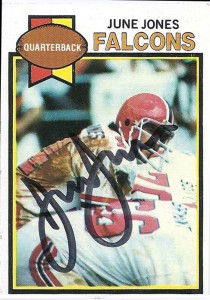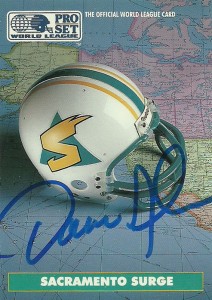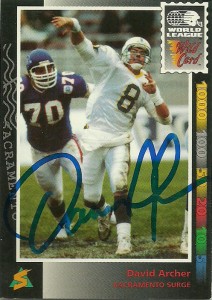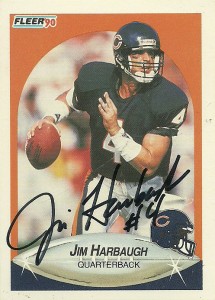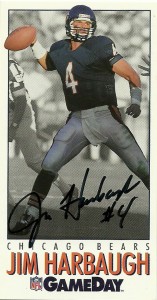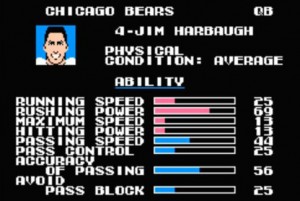Card: Topps 1978
Acquired: TTM 2010, C/o SMU
Sent: 1/13 Recieved: 2/1 (26 days)
A member of the Mouse Davis coaching tree, June Jones is considered a quarterback guru and offensive innovator and his teams typically employ a spread offense or Run ‘N Shoot variant. After playing in 3 different offensive systems and 3 different colleges, June would be drafted by the Atlanta Falcons out of Portland State where he played from 1977 to 1981. He’d then briefly play in the CFL for the Toronto Argonauts. Jones quickly moved into coaching, working under Jack Pardee and Mouse Davis as the wide receivers coach for the USFL Houston Gamblers, and then into the CFL coaching with the Ottawa Rough Riders. In 1987, June was hired by Jerry Glanville to coach Warren Moon as the quarterbacks coach in Houston and then with Detroit under offensive coordinator Mouse Davis. After this stint he would follow Glanville to Atlanta where he’d install the Run ‘N Shoot offense. Later he’d replace Glanville as head coach of the Falcons. June guided the team to the playoffs before a meltdown with quarterback Jeff George that was infamously caught on tape. The rift caused both of them to get released. Jones then worked for Kevin Gilbride briefly on the Chargers staff, before returing to the college ranks as head coach for the University of Hawaii. He turned a winless team around to a 9-4 bowl bound team in what is considered to be the fastest turn around in NCAA football history. By 2006 he was the winningest coach in Hawaii history and finished his career there in 2007 at 76-41. In 2008 Jones decided to leave Hawaii to coach perennial doormat SMU turning that franchise around in two seasons and leading them to their first bowl game in many years. Posted below are his college coaching statistics.
Wins 85 Losses 57 Ties 0
